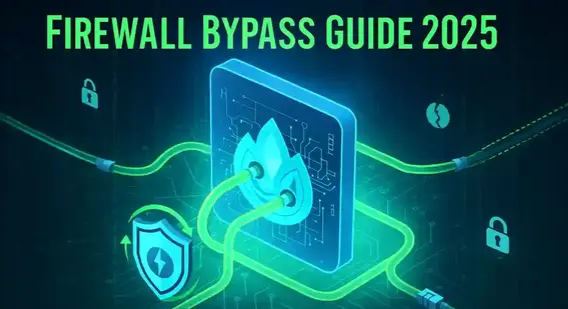Bug Bounty Nightmares: From Glory to Frustration
Published on: October 2, 2025 |
Author: Bibek Singh
The Dark Side of Bug Bounties No One Talks About
The headlines are intoxicating. "Teen Hacker Earns $1 Million!" Your Twitter feed is a highlight reel of massive payouts and celebrated researchers. The bug bounty dream is sold as a digital gold rush—a meritocratic arena where skill alone leads to riches and respect.
Behind the glamorous facade lies a different reality—one of psychological burnout, financial rollercoasters, and legal peril. This isn't a critique of the system itself, which has undoubtedly made the internet safer. This is a raw look at the dark side of bug bounty hunting that every aspiring hunter must see before they begin.
1. The Psychological Grind: The Path to Burnout
The greatest threat to a hunter isn't a sophisticated defense system; it's their own mind.
- The Endless Haystack: You are searching for a single, cleverly hidden flaw in millions of lines of code. The scale is astronomical, leading to analysis paralysis and mental fatigue. It’s a marathon run at a sprint's pace.
- The Imposter Syndrome Amplifier: It's common to invest 60+ hours in a week and find precisely nothing. This "drought" isn't just unproductive; it actively breeds a voice in your head asking, "Am I just not good enough?"
- The Unsustainable Treadmill: Cybersecurity evolves by the minute. Taking a genuine break means falling behind, creating a constant, low-grade anxiety that you must always be learning, always be hunting.
The Antidote: Set strict boundaries. Hunt for set hours, not until you collapse. Pursue offline hobbies. Remember that every hunter, without exception, experiences dry spells.
2. The Financial Mirage: Feast, Famine, and Duplicates
The promise of a six-figure income is, for most, a mirage.
- It's Not a Salary; It's a Gamble: Bug bounties are the ultimate freelance rollercoaster. A $10,000 month can be followed by three months of $0. There are no benefits, no paid time off, and no stability.
- The Soul-Crushing "Duplicate": Imagine spending days crafting a perfect exploit, documenting it flawlessly, and submitting it—only to be told someone else was minutes faster. You receive no reward, only a note in your profile. This isn't an exception; it's a core part of the grind.
- The Lowball Reality: Many programs, particularly from smaller companies, offer bounties of $50-$100 for vulnerabilities that required deep expertise to find. The math simply doesn't add up when you factor in the time invested.
The Antidote: Treat bug bounties as a lucrative side-hustle, not a primary income, until you have a proven, consistent track record over years. Track your time to understand your true hourly rate.
3. The Communication Abyss: When Programs Work Against You
The relationship between a hunter and a company is often the most frustrating part of the journey.
- The Black Hole Report: You submit a critical, well-documented vulnerability and hear nothing for weeks or months. The lack of communication and respect for your time is a silent epidemic in the community.
- Poor Triage and Gaslighting: Some program triagers lack the technical depth to understand a complex report. They may wrongly downgrade a bug's severity or request impossible levels of proof, making you question your own findings.
- Bounty Bargaining: Some organizations engage in negotiating down rewards after the work is done, claiming the bug wasn't "as critical" as initially thought. This bait-and-switch devalues the entire process.
The Antidote: Research programs before you invest time. Use platform metrics (like HackerOne's response time) and community feedback to identify programs with a reputation for fair and communicative triage.
4. The Legal Gray Zone: Where Good Faith Turns to Harassment
This is where the dark side of bug bounty gets genuinely frightening.
- The Weaponized Terms of Service: Accidentally testing an asset that is "out of scope"—even if it's connected to the main target—can lead to your IP being banned, all bounties revoked, and legal threats from corporate lawyers.
- The CFAA Sword of Damocles: Laws like the U.S. Computer Fraud and Abuse Act are notoriously vague. Even when acting in good faith, researchers can be threatened with federal charges that carry severe penalties, simply for probing a system.
- The Chilling Effect: The fear of legal retribution causes many hunters to avoid certain targets or techniques, stifling the very security research these programs are meant to encourage.
The Antidote: Read the scope. Then read it again. When in doubt, ask for clarification through official channels. Err on the side of extreme caution.
5. The Toxic Underbelly: Competition and Community Stress
While the community is largely supportive, a toxic undercurrent exists.
- Hyper-Competition: On lucrative programs, it's a cutthroat race. This can foster an environment of secrecy where hunters hoard techniques rather than sharing knowledge, contrary to the collaborative hacker ethos.
- Public Shaming & Drama: Disagreements over bounties or report classifications often spill onto social media, leading to public call-outs and community-wide drama that is exhausting for everyone involved.
The Antidote: Curate your online feeds. Mute toxic individuals. Focus on your own progress and find a small, private group of trusted hunters for support and collaboration.
Navigating the Darkness: A Survival Guide
If you're still determined to proceed-and many find the intellectual challenge irresistible-do it with a strategy.
- Specialize, Don't Generalize: The era of the generalist is over. The hunters who thrive are experts in specific niches: API security, mobile applications (iOS/Android), or blockchain/DeFi.
- Build Your Brand, Not Just Your Bank: The real long-term value isn't just in bounties. It's in the reputation you build, leading to consultation offers, speaking engagements, and career opportunities.
- Have an Exit Strategy: Define your red lines upfront. "If I don't achieve [X] within [Y] months, I will pivot." "If my health suffers, I will stop." This isn't planning for failure; it's practicing smart risk management.
Conclusion: Is It Worth It?
The dark side of bug bounty is very real. It is a path paved with psychological landmines, financial instability, and legal pitfalls.
However, for those who enter with their eyes wide open—who manage their mental health, finances, and legal risk with the same skill they use to hunt for bugs—it remains one of the most rewarding fields in technology. It offers unparalleled freedom, continuous learning, and the genuine satisfaction of making the digital world safer.
The dream isn't a lie. But it's incomplete. Understand the shadows, and you can navigate them to find the light.
Frequently Asked Questions (FAQ)
Q1: Is bug bounty hunting a stable career?
A: For the vast majority, no. It is characterized by extreme income volatility. It is highly recommended to start as a side hustle while maintaining a stable job. Only consider it a primary career once you have a consistent, proven track record over multiple years.
Q2: How do I handle the constant rejection and duplicates?
A: Reframe your perspective. Duplicates are not a reflection of your skill but a validation of your methodology. Use them as a learning opportunity to improve your speed and efficiency. The emotional resilience to handle "failure" is a core skill in this field.
Q3: What is the single biggest mistake beginners make?
A: Jumping into high-profile programs without reading the scope. This is the fastest way to get banned or into legal trouble. Start with smaller, "open to everyone" programs to learn the process and etiquette.
Q4: Are automated tools and AI making human hunters obsolete?
A: For low-hanging fruit, yes. The future of successful hunting is in creative, complex security research that machines cannot replicate—logical flaws, sophisticated chained exploits, and business logic errors.
Q5: How can I protect myself legally?
A: Always operate within a formal bug bounty program on a recognized platform. Document everything. Never test without explicit permission. If a program's scope is vague, consider it a red flag and avoid it.

Unlock the secrets of bug bounty hunting in 2024. Our ultimate guide for beginners covers how to sta…

Discover how hackers, apps, and websites track your exact location through your IP, GPS, and photos.…

Learn how to bypass firewalls for security testing. Step-by-step guide with Nmap, SSH tunneling, DNS…

